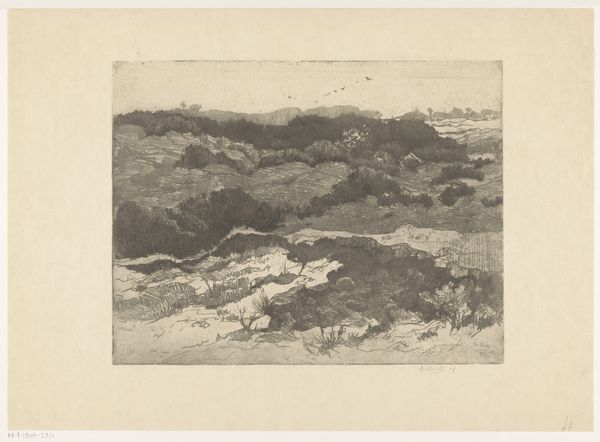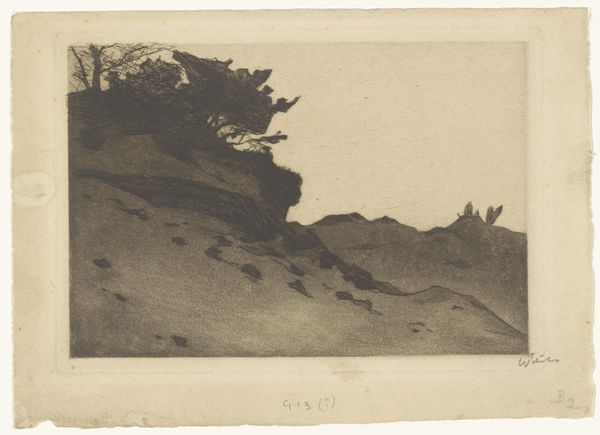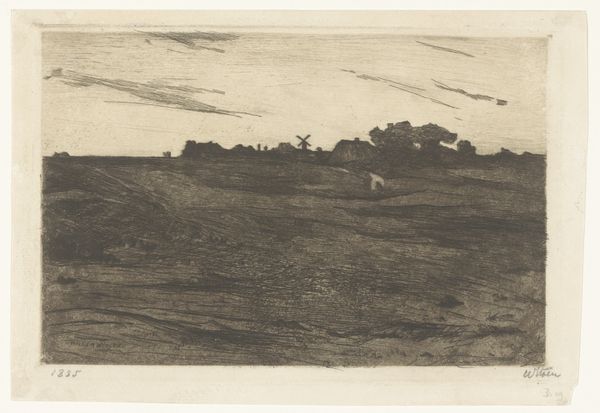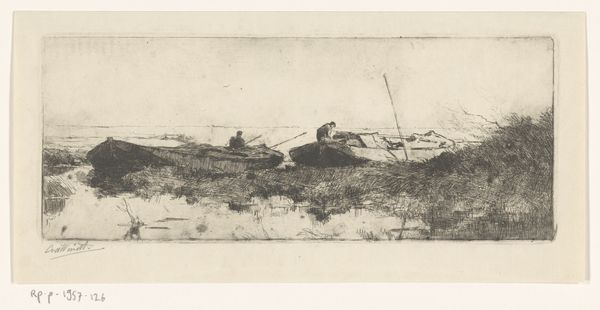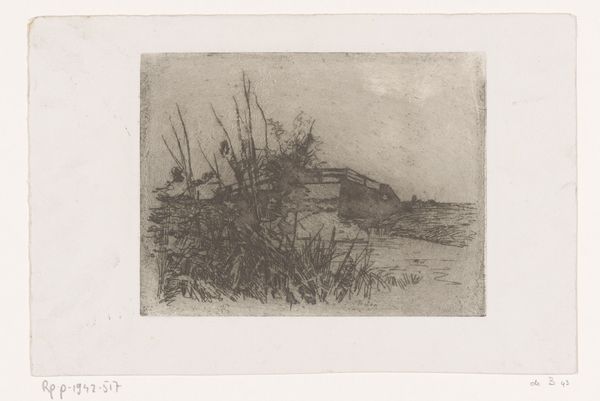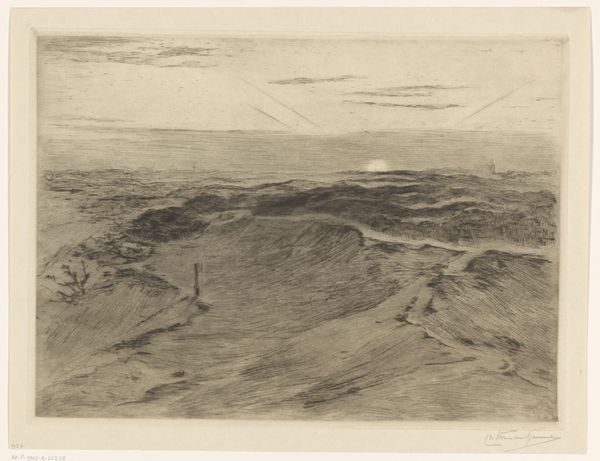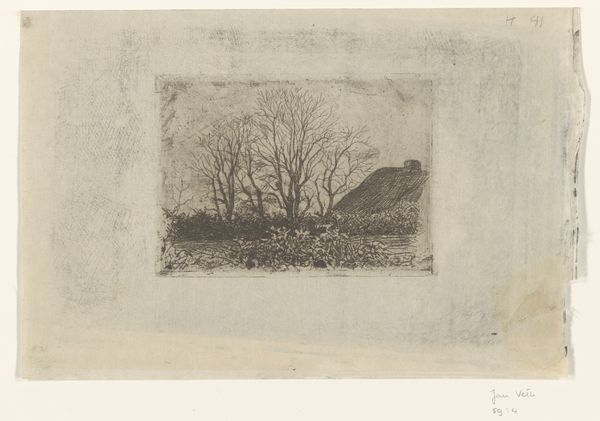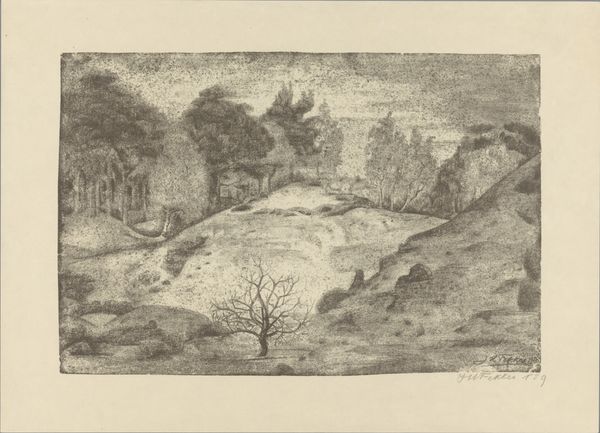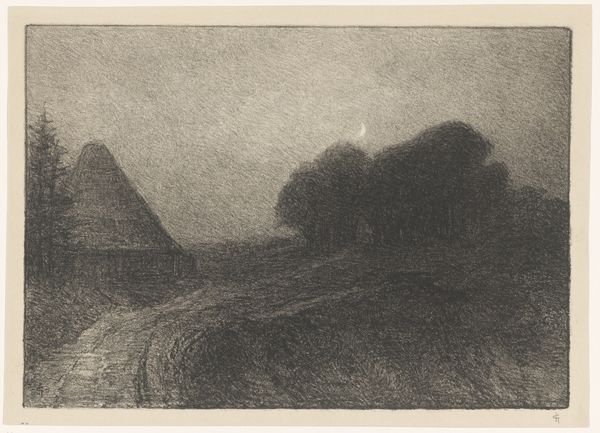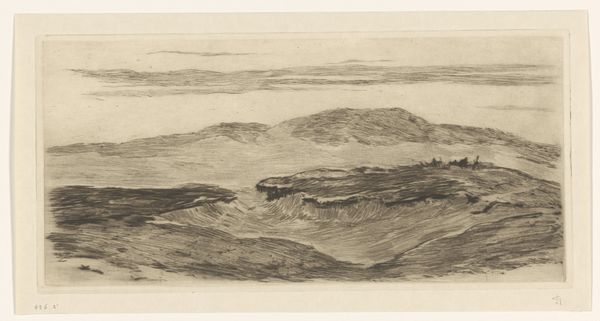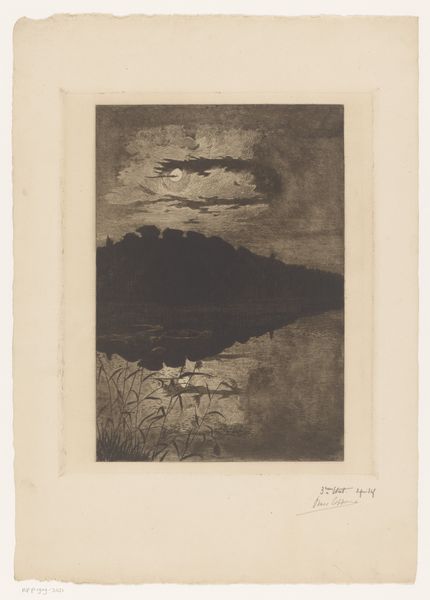
Dimensions: height 197 mm, width 240 mm
Copyright: Rijks Museum: Open Domain
Curator: This etching, titled "Heuvellandschap," by Willem Witsen, dates back to around 1891. You can currently find it in the Rijksmuseum collection. Editor: It's bleak, but compelling. A strong horizontal composition. What is most fascinating about it is that all the tones are within a very narrow range of value, but still it holds up, I mean, it doesn't fall apart, the etching marks making for some variety within a constrained monochrome. Curator: Witsen's engagement with landscape comes during a period where artists were consciously examining the Dutch identity. Think about how land is used, managed, who has access. Here the etching's limited color range speaks, I think, to constrained socio-economic circumstances for most. There's a social reading here. Editor: Etching's interesting, isn't it? Thinking of the copper plates, the biting process. This image comes from labor – physically pressing the plate. But even further, this reproductive technology meant these landscapes, owned by maybe only few families, could be disseminated across many more households. A quiet way of agitating some viewers. Curator: Absolutely. And Witsen moved among literary and artistic circles known for their social awareness, very much challenging traditional bourgeois values. Consider also how the Impressionist style comes to bear on his choice to feature this more remote and raw vista over a cultivated vista, and so in that sense is a challenge, implicitly, to the patriarchy of pastoral romanticization of landscape and nature. Editor: I also think of the ink. The black ink sitting on cream paper really activates the visual experience here. Looking closely I can see exactly how that ink was pulled from the plate in that printing press, really pressing onto the sheet. Every line is intentionally created by physical, hands-on gestures with tools. This level of mediation is important to unpack. Curator: Yes, focusing on those laboring bodies whose vision and work are material to this artwork really shifts our interpretation. Understanding the artistic, material processes also shapes our experience beyond a singular view on individual aesthetic sentimentality. Editor: Examining "Heuvellandschap," and really getting granular with those aspects gives me so much to ponder, beyond its initial subdued tone and quiet subject matter.
Comments
No comments
Be the first to comment and join the conversation on the ultimate creative platform.
